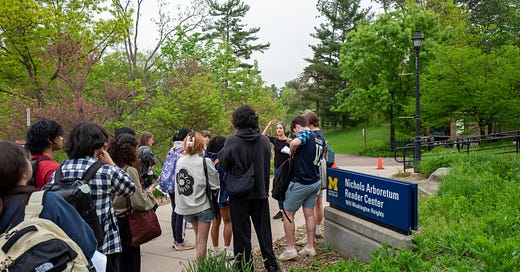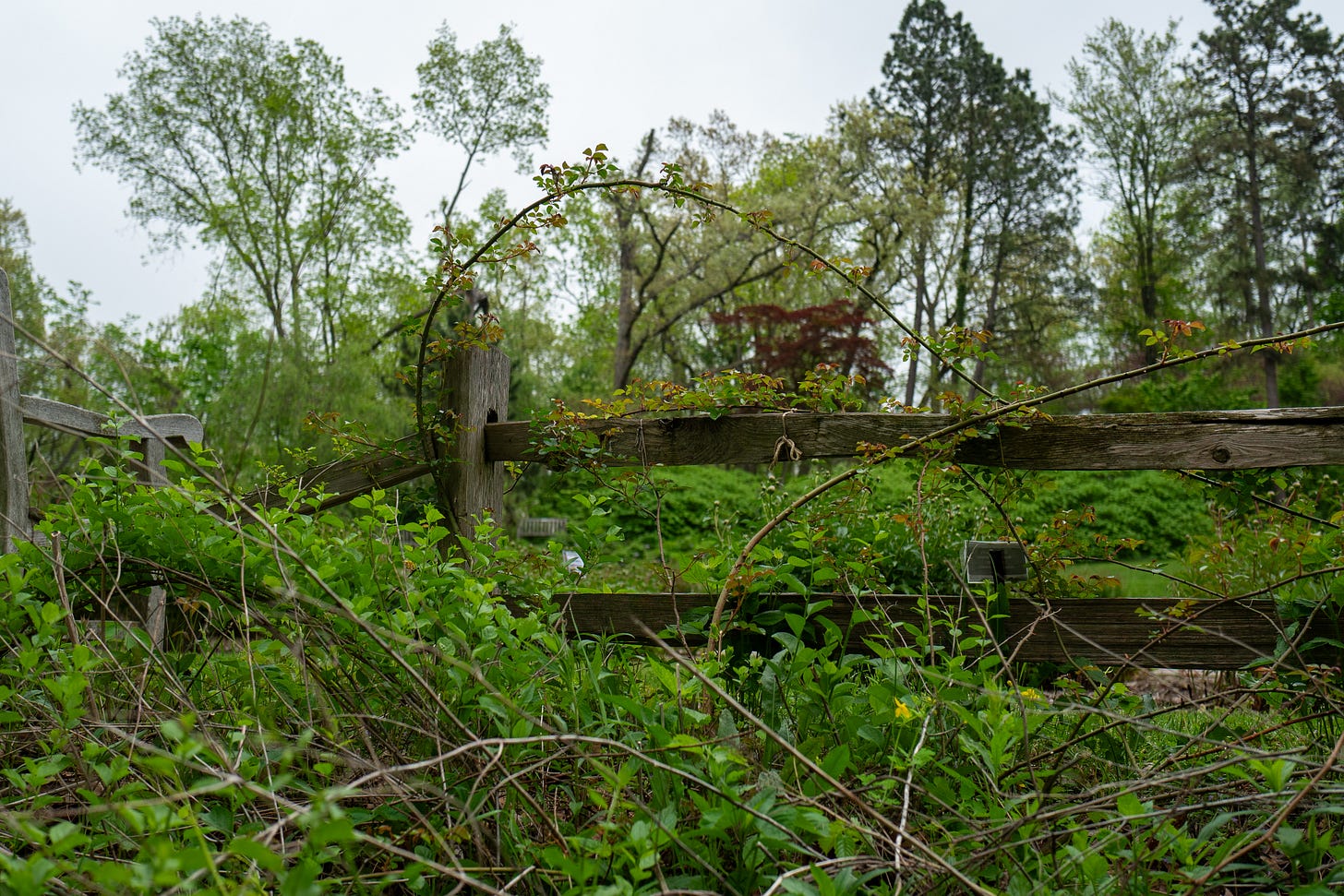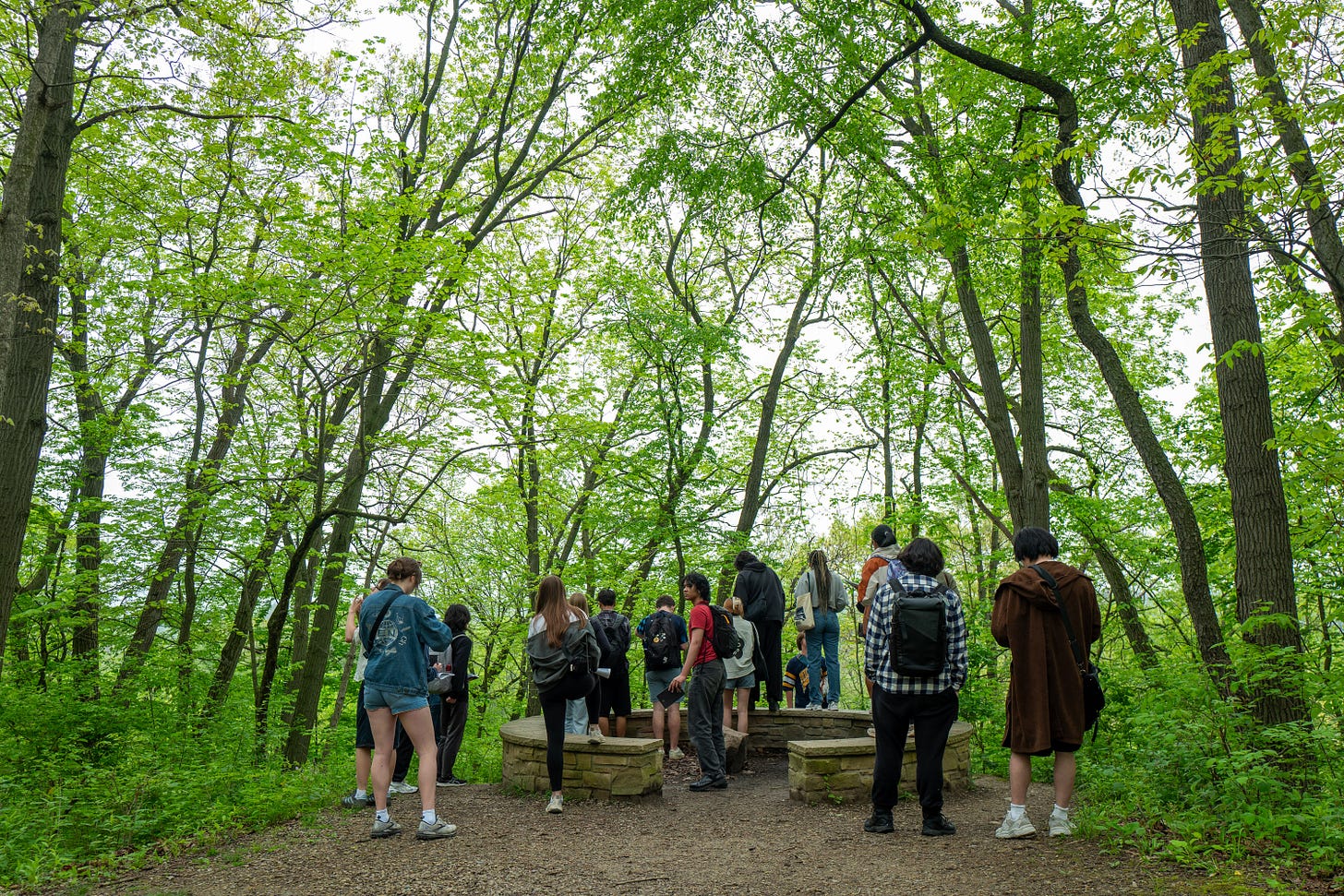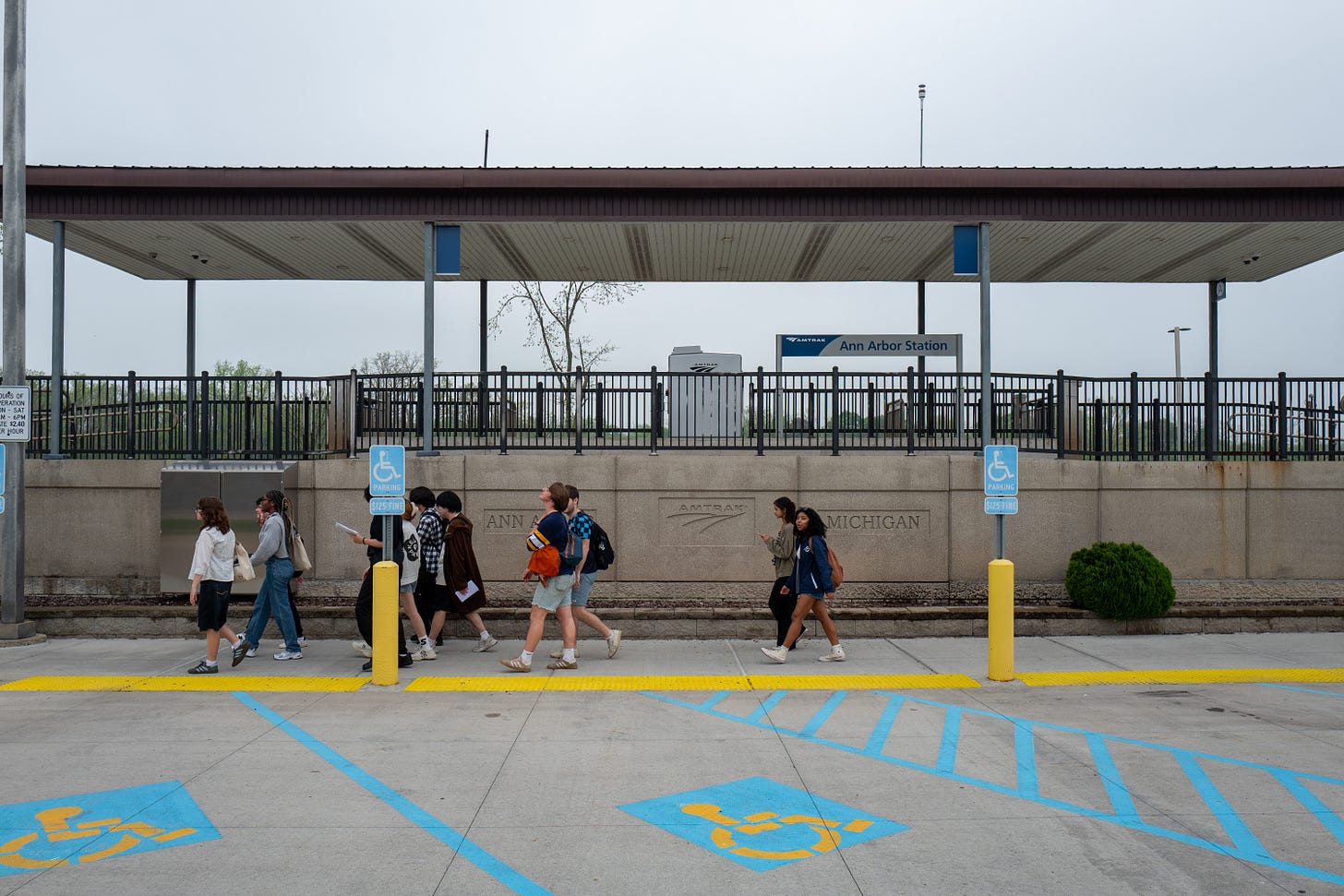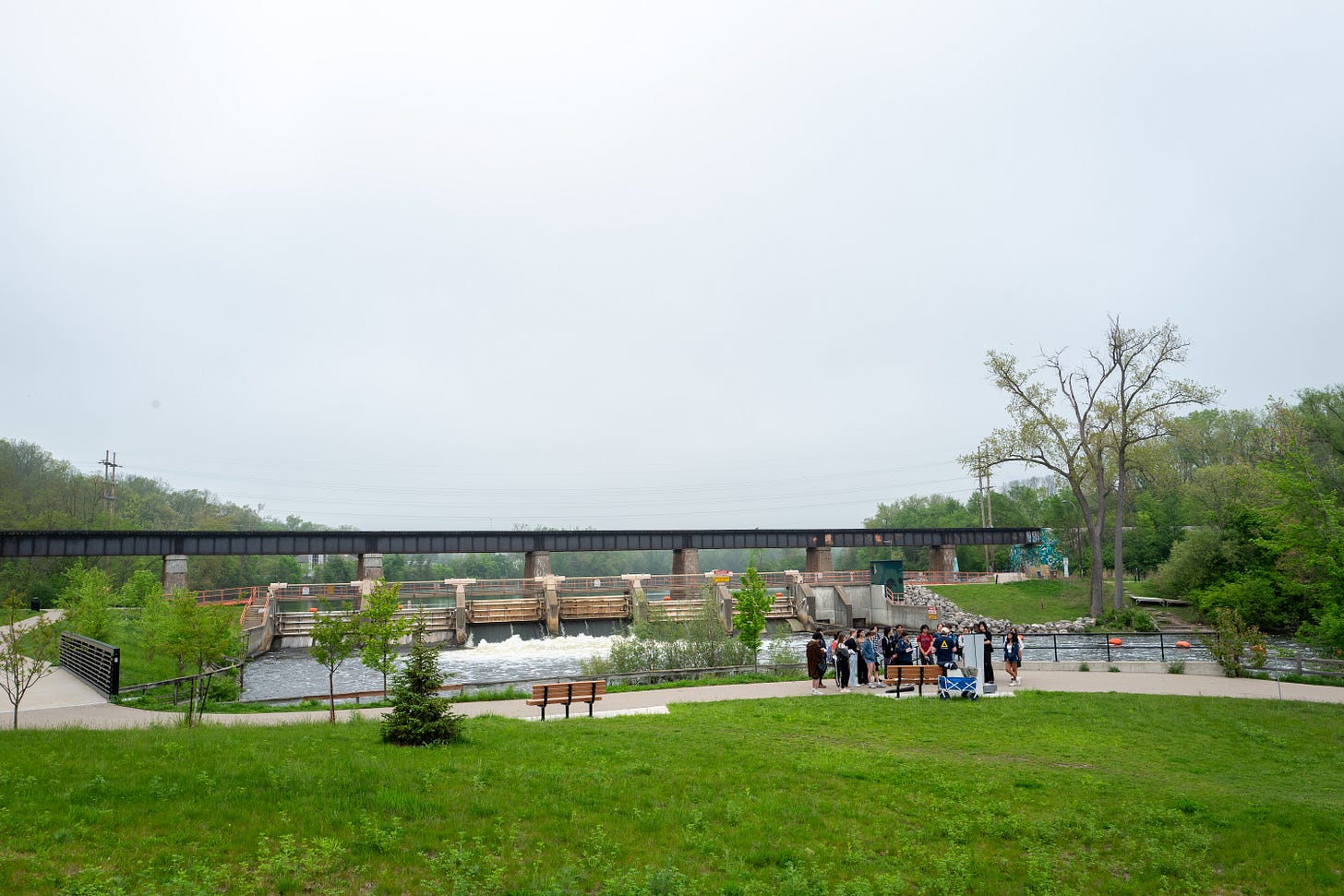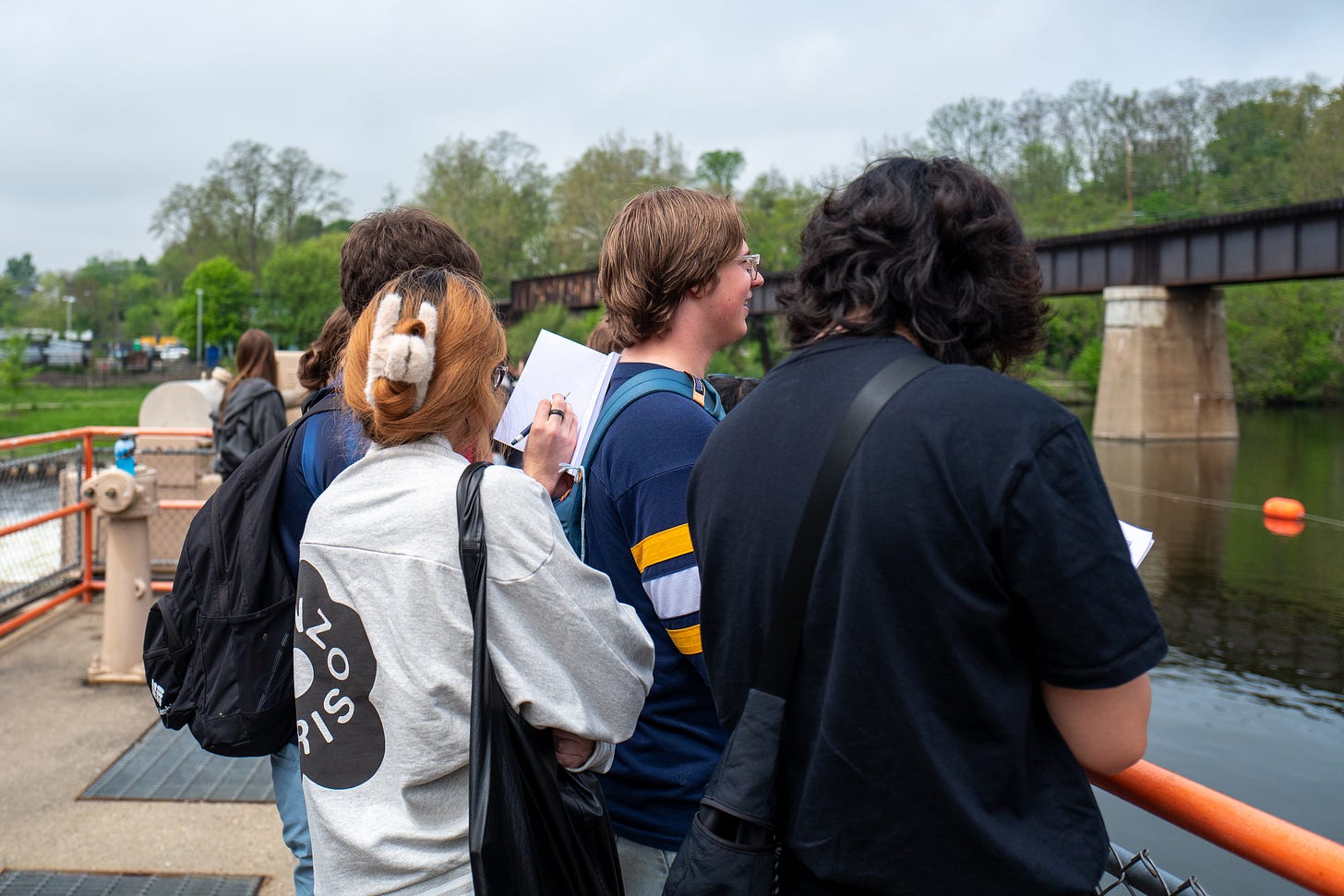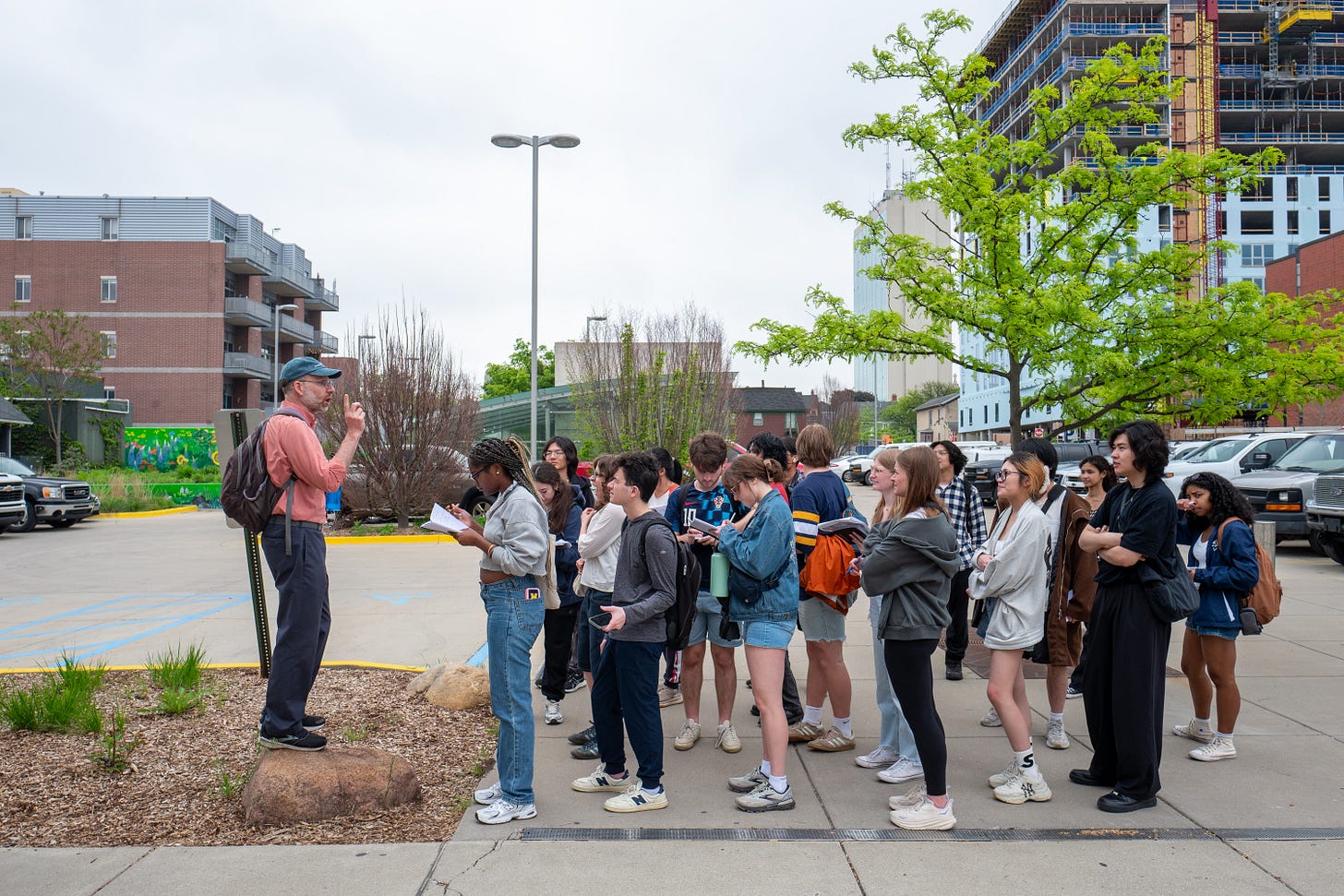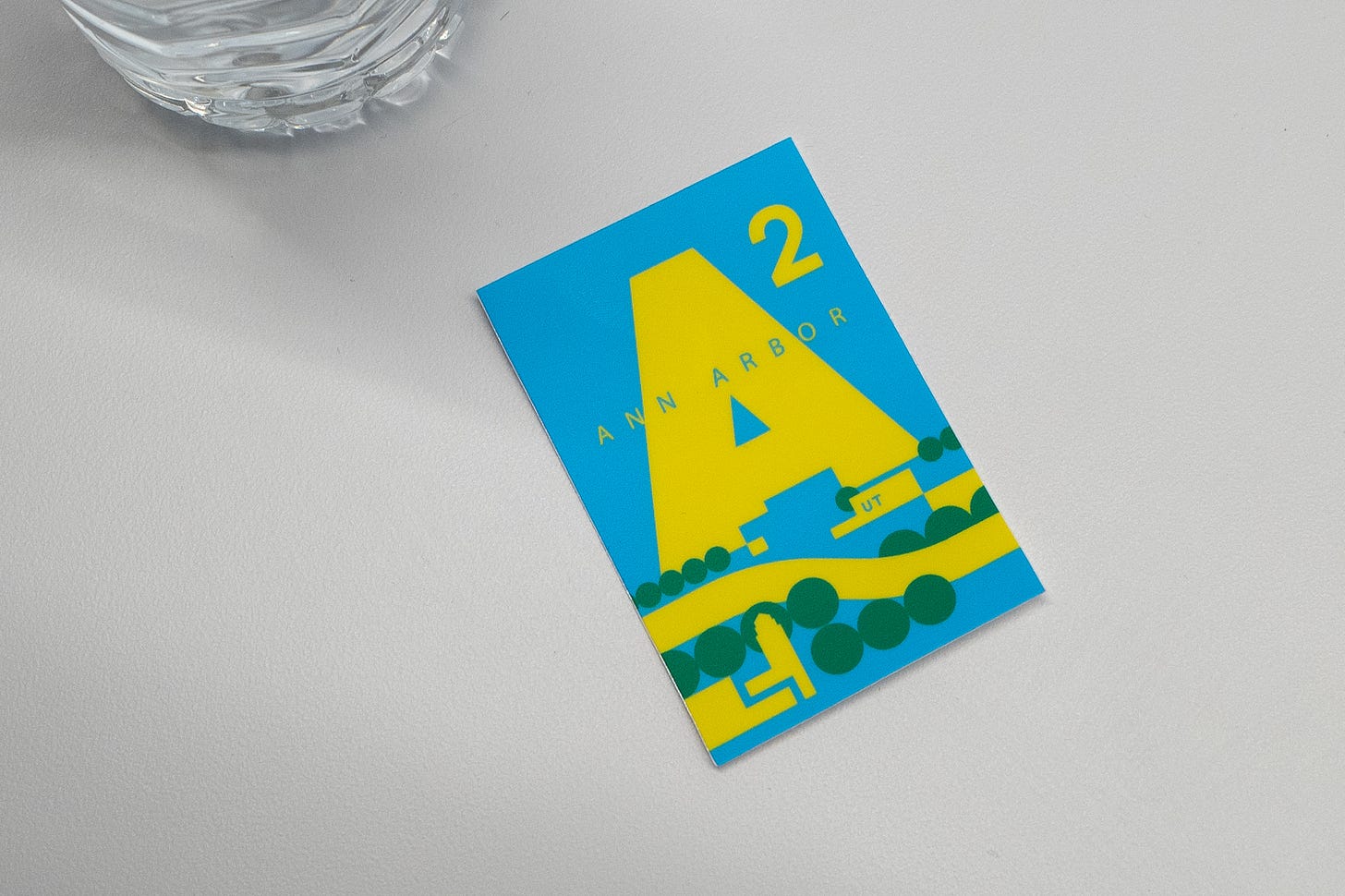In the last issue of this newsletter we celebrated a first—first graduates—and this is about a last. Recently we kicked off the last spring Cities Intensive. As of this fall we will be a ‘fall start’ degree program (i.e., a normal college schedule) and our Cities Intensive will move to the autumn. This new phase we’re in is less about “What the heck should we do?” and more characterized by “How can we adapt this thing we’ve been doing?” and “How can we improve it?” Even as Phil D’Anieri, Emily Kutil, and Matthew Wizinsky recently took students on an all-day exploration of Ann Arbor’s public realm, we were also thinking how this adventure will be adapted to a September setting.
💬 Hello! This is the newsletter of the Urban Technology program at University of Michigan, in which we explore the ways that data, connectivity, computation, and automation can be harnessed to nurture and improve urban life. If you’re new here, try this short video of current students describing urban technology in their own words or this 90 second explainer video.
🌳 To Learn About a City, Take a Walk
While the schedule will change, the core purpose of the Cities Intensive and our field trips to cities will not. This is about learning to understand urban places and their communities through direct experience. The city is our textbook, and a multi-dimensional one at that.
This year we added Ann Arbor to the rotation. I was nervous that our students would think that a ‘field trip’ to the city they already call home would feel like a cop out, but we decided that it’s the right choice for a couple reasons. From the perspective of what you might call ‘durational learning,’ it’s a good idea for the students to know Ann Arbor well and to be able to evolve their understanding of this place over time. Our instructors can refer back to experiences they had and students can literally revisit them throughout the semester. It also gives us the ability to draw on our broader faculty’s expertise and engagement, like inviting colleague Sarah Mills to give a lunchtime talk about her work as a Planning Commissioner for the city.
To some extent this was a test of Phil’s concept that Anatomy of The City can be taught anywhere, because what we’re teaching is to understand urban systems rather than, say, the specifics of Ann Arbor’s Tilia cordata shade trees on a particular patch of dirt. These trips are a dance between the concrete city in front of our eyes and the invisible relationships between the natural, built, and human systems that make up urban places.
In Tree Town our focus was aptly on public spaces and the public realm, a theme we’ve previously explored in Detroit. With our group size now pushing 50, gone are the days of everyone huddling around a guest speaker on the street corner. Instead the team developed a clever rotational scheme. For the afternoon we created our own little bus route (powered by a charter) that circulated between the Arboretum, the train station, and the downtown library. Students broke into groups A, B, and C, and moved through each of the locations for a brief walking tour with one of our professors.
At the Arb, which is a garden and nature preserve maintained by the University, Emily Kutil led the students through an observation of the topography, vegetation, and infrastructure. Standing in a forest, we listened for how quiet it was despite being next to the hospital and its emergency services entrance. As we walked I noticed some intricate trussing of vines on an old wooden fence. These weathered strings, hidden in the foliage, were a metaphor for the tenuous relationship between humans and nature in the urban era. They reminded me that balance comes with intention and care, but is inevitably temporary. The morning was both profound and practical.
Another topic of conversation? Edges. How do you know you’ve arrived to the Arb? When do you feel like you’re inside? What tells you that this is the case? These kinds of questions are indicative of the urban design teaching that Emily and Matthew area leading in UT 103.
Next up was the Argo dam and the Cascades, a waterway through Ann Arbor that’s popular for tubing. On a cloudy spring day we only managed to spot one kayaker, and I hope they appreciated the hearty applause they received from our group after navigating the rapids. Matthew Wizinsky met us in front of the Amtrak station and then led the group through a tunnel under the tracks and to the dam, which itself is part of a cycle pathway through the city. We snaked around the site of Broadway Park West, a mixed use development in progress that will include a 7 acre park built on a former coal yard.
In this little nexus commuters moved via train, bikes, and pedestrian power while folks fished and kayaked recreationally. If you look closely, the idea that human, natural, and built systems are interrelated becomes manifest quite literally on the dam. It was the smallest of moments that caught my eye in the form of a birds nest built in the nooks of a gangway on the dam. There it was: nature (birds) finding grip in a manmade system (dam) that harnesses and redirects a natural system (water) for the benefit of other humans. Students were doing sketching and observational work as we walked. Experiences like this are about learning to notice what’s right in front of us, underfoot, and overhead. Sometimes that’s hidden in the obscurity of a hunk of concrete incongruously standing in the forest (actual water infrastructure), or in the form of a dam that seems to be doing something like generating power but is actually a decommissioned relic whose purpose is now to create recreational rapids (actually only former water infrastructure).
Back on the bus to the final stop and we got dropped off right downtown at the library, where we met Phil D’Anieri. Over morning bagels and coffee we had heard from multi-hyphenate Molly Kleinman, who is Ann Arbor District Library Board of Trustees, and now we were standing in front of the project she discussed. This August the library has a ballot initiative to create a new downtown facility that will be a mixed-use building with housing and a much larger library that is as much about books as it is all sorts of other civic life and activity. This will be a palace for the people, in the words of Eric Klinenberg, in the spirit of new Libraries in Austin, Oslo, or Helsinki.
Next door to the dilapidated current library building is a concrete pad, which is actually the top of an underground parking deck. This zone was once slated to be the site for a mixed-use development above ground, and under a separate plan was going to be a “commons,” but neither came to fruition. It has been a saga. If the August ballot initiative succeeds, the Library will be on a path to create a new top-notch facility, a couple hundred units of housing, and new public spaces all in the area of what currently is parking and a “park” that contains barely enough grass for a Great Dane to relieve itself. You can’t study cities without confronting NIMBY/YIMBY dynamics, and as if on cue someone came up to the group and expressed their strong feelings about the project in the middle of one of Phil’s micro-lectures. Cities gonna city.
From there we had a short walk to a working lunch with Sarah Mills. She shared the ongoing work of the comprehensive plan for 2050 that aspires to imagine Ann Arbor as a town of circular economies. Sarah described a “city as lab” that can work to make things like rooftop solar and better transit a new normal. Ann Arbor is serious about decarbonization and has gone so far as to create its own sustainable energy utility in response to the local power utility being a little too comfortable continuing to use coal. This is ambitious and speaks to the power of government, even at a small scale, to “derisk” changes in infrastructure and urban systems by incentivizing them as well as investing in them directly. While the day was focused on the physical common spaces of the city, Sarah’s talk brought us to the metaphorical commons of public/private partnerships and work it takes to make cities thrive.
These weeks: One trip down, two to go. Fiercely nailing down itineraries and logistics for upcoming trips to Detroit and Chicago. Discussions about how we scale up for fall - more students and less precious time. 🏃

